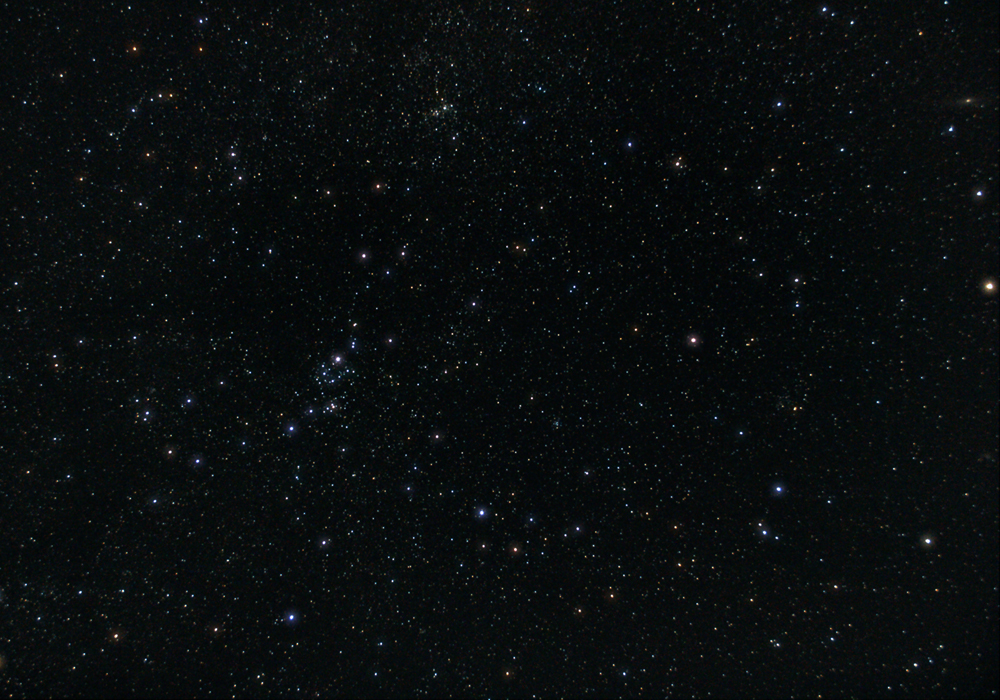
The northern contellation Perseus is visible in the evening sky throughout the fall and winter months. It contains several noteworthy objects. Probably the best known is the Perseus Double Cluster, a pair of brilliant open clusters that are dimly visible to the naked eye, and are a spectacular sight through a telescope at low power.
There are also two Messier objects, the large and bright open cluster M34, and the planetary nebula M76, known as the Little Dumbbell Nebula. This planetary can be glimpsed with any telescope, but it is especially impressive with larger apertures.
Surrounding Mirfak (Alpha Perseii) is the Alpha Perseus Association, a large array of blue-white stars. Some can be seen with the naked eye, and the view of this area is very nice through binoculars or a wide-field telescope.
Algol is an eclipsing binary, one of the most famous in the sky. As its two component stars obit and eclipse each other, Algol's magnitude varies between 2.1 and 3.9 in a regular period of 2.867 days. Its variability was observed by ancient sky-watchers, who saw it as the head (or blinking eye) of Medusa. It is called the Demon Star.